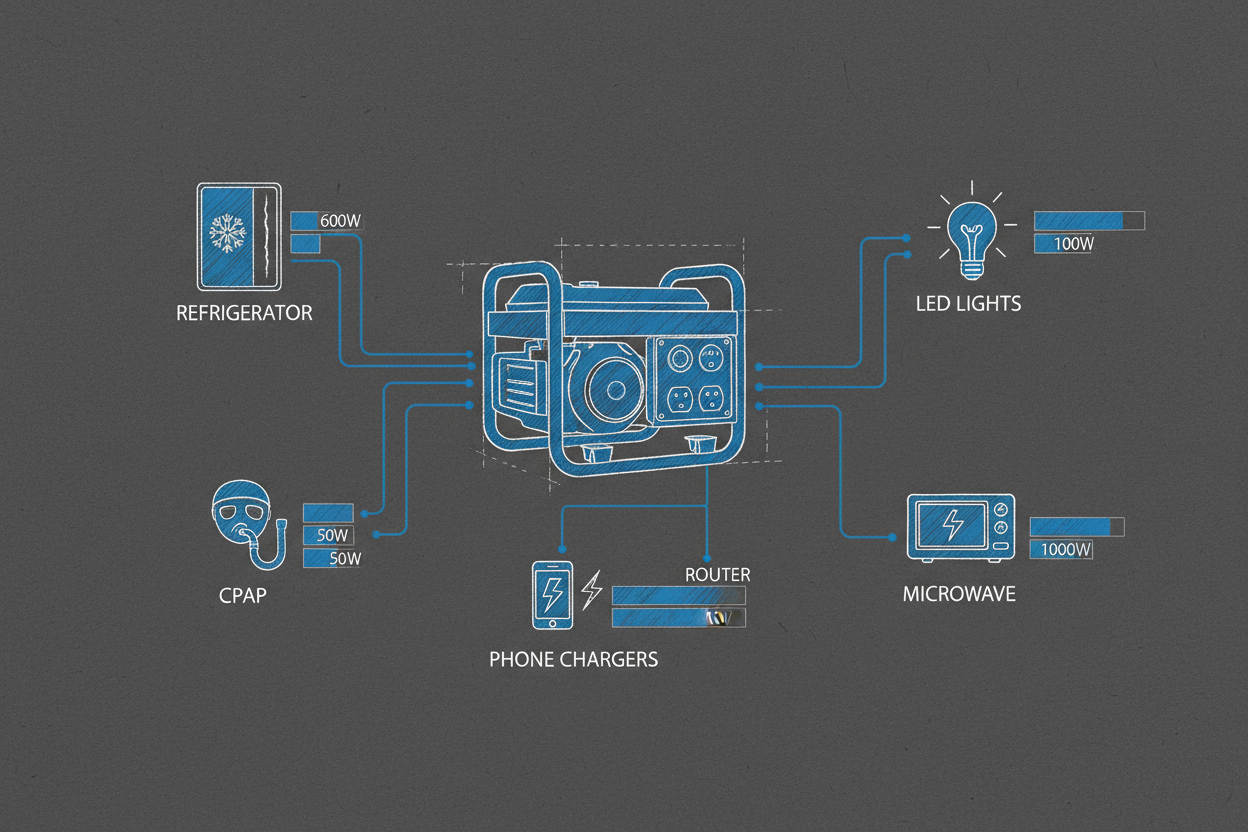Essential Devices to Power During a Home Outage
During a power outage, prioritizing essential devices ensures comfort, safety, and communication. Inverter generators provide clean, stable power for the most important household equipment.
Understanding which appliances matter most helps families create effective emergency power plans.

Essential Emergency Loads
Critical devices keep homes functional and safe. These appliances should receive priority during any outage scenario.
- Refrigerator: Prevents food spoilage during long outages
- CPAP machine: Supports overnight breathing needs
- Wi Fi router: Enables emergency communication
- LED lights: Provides safe visibility in dark rooms
- Phone chargers: Keeps communication devices active
Devices for Comfort and Convenience
Some appliances improve comfort during extended outages. These loads are optional but helpful when capacity allows.
- Microwave for quick meals
- Fans for air circulation
- Low-watt space heaters in cold climates
- Small kitchen appliances
High-Draw Appliances to Use Sparingly
High-draw devices require careful load management. They may exceed generator limits if used at the same time.
- Large space heaters
- Electric stoves
- High-watt hair dryers
- Large microwaves
Load Prioritization Tips
Organizing devices by priority helps avoid overload. Critical loads should always come first during emergency operation.
- Start with essential medical and refrigeration devices
- Use comfort appliances only when capacity allows
- Stagger high-watt tools to reduce surge demand
Conclusion
Powering essential devices ensures safety and comfort during home outages. A well-planned load strategy keeps key household functions running smoothly.
